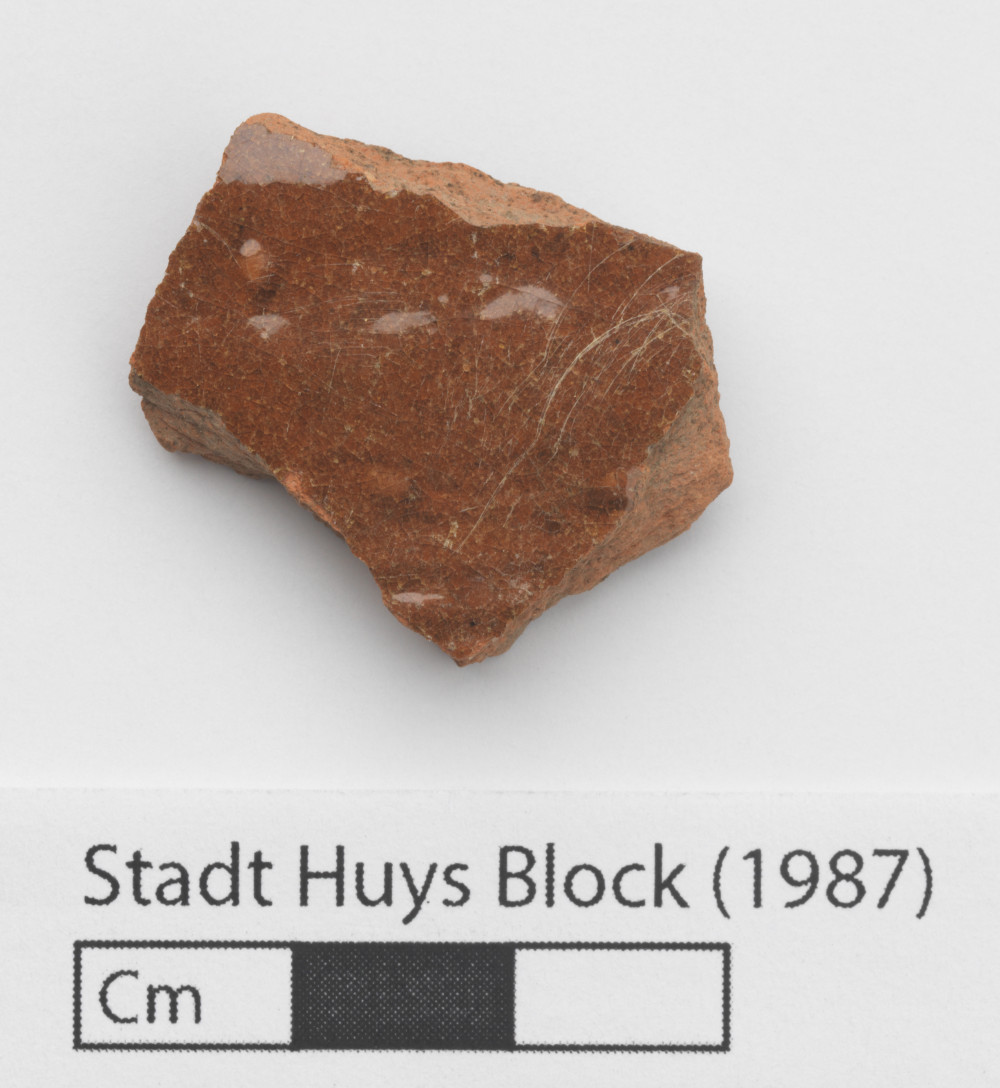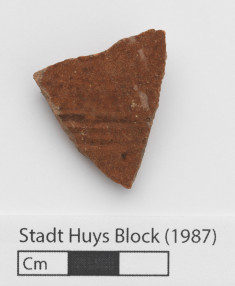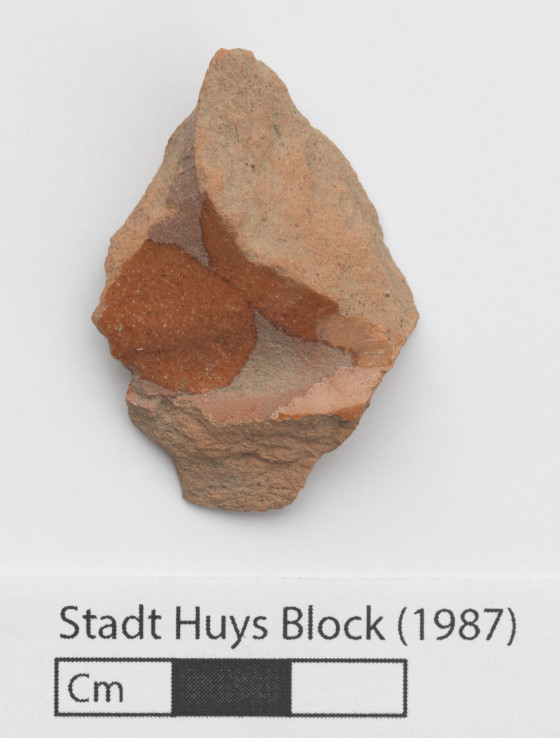Introduction: Lots 8, 9, and 15 are modern designations for adjacent parcels of land that were owned together and used as a single property until the early 1830's. Lots 8 and 9 front Pearl Street and are important to the Stadt Huys project because they contained archaeological remnants of the Colonial-era Lovelace Tavern, a public house built around 1670. The Lovelace Tavern was the most important discovery on the Stadt Huys project because it proved that significant archaeological resources could still exist in urban spaces.
Rationale: Test Cut T was an exploratory trench placed in the backyard of Lot 9 to assess the integrity of deposits underlaying a modern cement floor. Importantly, the excavations of the test cuts in the backyard of Lot 9 revealed that this area was the most archaeologically intact on the entire project. This means that many archaeological features, artifacts, and intact stratigraphical layers were discovered during testing. Therefore, Test Cut T is an important resource for understanding the historical development of Lot 9.
Results: This level is part of the "slumped deposits" and dates to the late-17th/early-18th century. A series of what project archaeologists termed "slumped deposits" were found during excavations of the ca. 1829 builder's trench for Lot 9's main building. These layers were produced when intact stratigraphy became structurally unstable when the trench was open in the 19th century, causing them to collapse.
Lot 9, Test Cut T, Stratum XXXIV, Level A
-
Collection method
Trowel, Screen (1/4-inch mesh). Natural Layer.
-
Soil description
Rusty Brown Sandy Silt
-
Munsell
10YR 5/4








